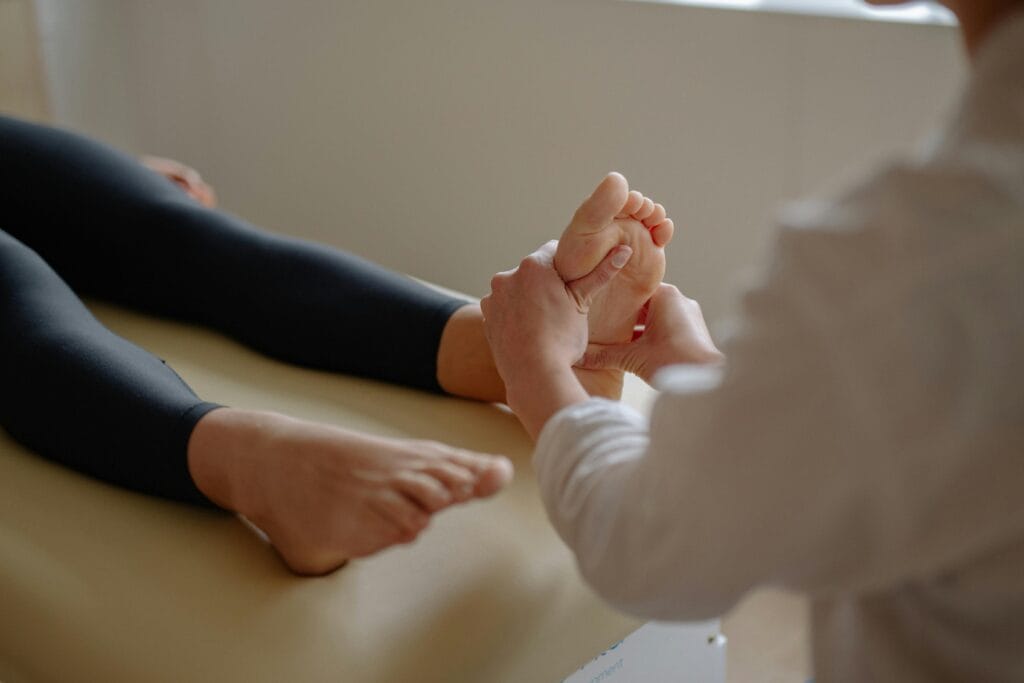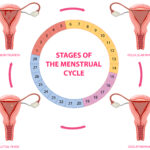FREE SHIPPING OVER $50
Is This Foot Sensation a Red Flag? It Could Be an Early Warning of Diabetes
Have you ever felt a strange tingling in your toes, a persistent numbness, or a burning sensation in your feet that just doesn’t seem right? It’s easy to dismiss these little quirks – perhaps you slept poorly, or your shoes are a bit too tight. But what if your feet are trying to tell you something far more important about your health?
It might sound surprising, but your feet can act as an incredibly important early warning system for diabetes. This chronic condition, which affects millions of people, often begins silently. However, subtle changes in your feet can be among the first clues your body gives you that something is amiss with your blood sugar levels. Catching these early warning signs can make all the difference in managing diabetes and preventing serious complications down the line.
Why Your Feet Are a Diabetes Early Warning System

To truly understand why your feet are so important for diabetes detection, you need to know how the condition impacts your body. At its core, diabetes is about consistently high blood sugar levels. Over time, this excess sugar circulating in your bloodstream can damage tiny nerves and blood vessels throughout your body, especially in your extremities, like your feet.
This damage manifests in two primary ways that directly affect your feet:
- Diabetic Neuropathy (Nerve Damage): High blood sugar can injure the nerves that send signals from your feet to your brain. This can lead to a loss of sensation, but paradoxically, it can also cause abnormal and sometimes painful sensations.
- Poor Circulation (Blood Vessel Damage): Diabetes can also stiffen and narrow your blood vessels, reducing blood flow to your feet. When your feet don’t receive enough oxygen and nutrients, they become more vulnerable to infection, slower to heal, and susceptible to various other issues.
These changes often start subtly, almost imperceptibly, which is why paying attention to any “weird” or persistent foot sensation is crucial.
The Red Flag Sensation: What to Watch Out For
The most common “red flag sensation” in your feet related to diabetes is a symptom of diabetic neuropathy. This nerve damage can cause a range of feelings, often starting in the toes and gradually spreading upwards. Here’s what to watch out for:
- Tingling or “Pins and Needles”: This is often one of the earliest and most recognizable foot sensations. It might feel like a mild, buzzing sensation or a prickling “pins and needles” feeling, especially in your toes or balls of your feet. It could be intermittent at first, perhaps noticeable only when you’re resting.
- Numbness: As nerve damage progresses, you might start to lose sensation in your feet. This can feel like your foot is “asleep,” or that you’re wearing socks when you’re not. You might not feel hot or cold temperatures as intensely, or even minor cuts, blisters, or pressure. This loss of protective sensation is particularly dangerous as it means you might not notice an injury until it’s become severe.
- Burning Pain: For some, neuropathy manifests as a persistent, uncomfortable burning sensation in the feet, often worse at night. This can range from a dull ache to an intense, searing pain.
- Sharp, Shooting Pains or Cramps: You might experience sudden, stabbing pains or uncomfortable muscle cramps in your feet or calves, seemingly out of nowhere.
- Extreme Sensitivity to Touch: Counterintuitively, some individuals with neuropathy find that their feet become incredibly sensitive. Even the lightest touch, like bedsheets, can cause discomfort or pain.
- Loss of Balance or Coordination: Because the nerves in your feet also help your brain understand where your body is in space, nerve damage can sometimes affect your balance and make you feel unsteady when walking.
Beyond Sensation: Other Foot Symptoms That Signal Diabetes
While neuropathy causes specific sensations, high blood sugar and poor circulation can also lead to other visible changes and problems in your feet. These are equally important warning signs:
- Skin Changes: Your feet might become unusually dry, cracked, or flaky due to impaired nerve function affecting sweat and oil glands. The skin might also appear shiny and smooth, or the hair on your toes and feet might disappear, indicating poor circulation.
- Temperature Changes: Your feet might feel unusually cold to the touch, even in warm environments, a sign of reduced blood flow. Conversely, some people experience a sensation of hot feet due to nerve damage.
- Slow-Healing Sores, Cuts, or Blisters: This is one of the most serious foot symptoms of diabetes. Due to poor circulation and reduced sensation (neuropathy), even a small cut, blister, or ingrown toenail can go unnoticed and take an exceptionally long time to heal. Without proper blood flow, the body struggles to repair itself, leading to chronic wounds that can become infected and, in severe cases, require amputation.
- Fungal Infections: High blood sugar levels create an ideal environment for fungi and bacteria to thrive. This makes people with undiagnosed or unmanaged diabetes more prone to fungal infections like athlete’s foot or toenail fungus (thickened, yellow, brittle toenails). These infections can be harder to treat and can lead to more serious complications.
- Changes in Foot Shape or Deformities: Over time, nerve damage can weaken the bones and joints in the foot, leading to changes in its shape, such as the development of hammertoes or bunions. In advanced cases, severe nerve damage can lead to Charcot foot, a condition where bones in the foot weaken and fracture, potentially leading to severe deformity.
Don’t Just Look at Your Feet: Other Common Diabetes Symptoms
While your feet can offer vital clues, it’s important to be aware of other general symptoms of diabetes. These often appear in conjunction with foot symptoms or can be earlier indicators:
- Frequent Urination: Your kidneys work overtime to filter excess sugar from your blood, leading to more frequent trips to the bathroom.
- Increased Thirst: As you urinate more, you become dehydrated and feel constantly thirsty.
- Unexplained Weight Loss: Despite eating more (due to increased hunger), your body might not be able to use glucose for energy, leading to weight loss.
- Increased Hunger: Your cells aren’t getting glucose for energy, so your body constantly signals for more food.
- Blurred Vision: High blood sugar can cause fluid to shift in the lenses of your eyes, leading to temporary blurry vision.
- Fatigue: Lack of energy due to your cells not getting the glucose they need.
- Slow-Healing Cuts and Bruises (General): Similar to foot sores, other wounds on your body may take longer to heal.
- Frequent Infections: High blood sugar can weaken your immune system, making you more susceptible to infections like yeast infections, skin infections, or urinary tract infections.
What to Do If You Notice These Symptoms: See Your Doctor!
This is the most important takeaway: do not self-diagnose. If you are experiencing any of the foot sensations or other diabetes symptoms described above, make an appointment to see your healthcare professional as soon as possible.
Your doctor can perform simple blood tests to check your blood sugar levels, such as:
- Fasting Plasma Glucose (FPG) Test: Checks your blood sugar after an overnight fast.
- HbA1c Test: Provides an average of your blood sugar levels over the past 2-3 months.
- Oral Glucose Tolerance Test (OGTT): Measures your blood sugar before and 2 hours after you drink a sugary liquid.
These tests are quick, straightforward, and provide crucial information about your diabetes status.
Proactive Foot Care for Diabetes Prevention and Management
Whether you’re concerned about diabetes or have already been diagnosed, proactive foot care is essential. Think of it as a vital part of your daily health routine:
- Check Your Feet Daily: Make it a habit to inspect your feet every day for any cuts, blisters, redness, swelling, sores, or changes to your nails. Use a mirror if needed to see the bottoms of your feet.
- Wash Your Feet Daily: Use mild soap and lukewarm water. Avoid hot water, as nerve damage might prevent you from feeling its temperature.
- Dry Your Feet Thoroughly: Pay special attention to drying between your toes to prevent fungal infections.
- Moisturize Your Feet: Apply lotion to keep the skin soft and prevent cracking, but avoid putting lotion between your toes.
- Trim Toenails Carefully: Cut nails straight across, never into the corners, to prevent ingrown toenails. If you have difficulty or nerve damage, have a podiatrist do it.
- Wear Comfortable, Well-Fitting Shoes and Socks: Choose shoes that are supportive and have enough room in the toe box. Always wear socks that wick away moisture (avoid cotton, which retains moisture). Check your shoes for foreign objects before putting them on.
- Never Walk Barefoot: Especially outdoors, to protect your feet from injury.
- Regular Doctor Visits: Schedule regular check-ups with your primary care physician, and consider annual visits to a podiatrist (foot doctor) for comprehensive foot care and professional inspections.
- Manage Your Blood Sugar Levels: This is the absolute best way to protect your feet. Follow your doctor’s advice on diet, regular exercise, and any prescribed medications to keep your blood sugar within target ranges.
Listen to Your Feet: Your Body’s Early Warning System
That “weird foot sensation” might just be a fleeting oddity, or it could be your body’s subtle way of sounding an early warning alarm for diabetes. Paying attention to these often-overlooked foot symptoms empowers you to take control of your health. Don’t dismiss what your feet are trying to tell you. Be proactive, seek professional medical advice if needed, and give your feet the attention and care they deserve – they’re vital to your overall well-being!
Related Articles
- Diabetes Alert: Why Sweet Drinks Are WORSE Than Solid Sweets for Your Blood Sugar (And How to Escape!)
- Cravings OUT! 10 Protein Snacks That INSTANTLY Crush Hunger & Stop Weight Gain
- Unlock Your Leanest Body: 10 Best High-Protein Fish Nutritionists SWAP for Chicken (Game-Changing Meals!)
- Breakfast Game-Changer: This High-Protein Smoothie Bowl Keeps You Full for HOURS (Seriously Delicious!)
- Stop Cravings Cold! The 10 “Clean” Protein Bars That Actually Keep You Full (Trainer Approved!)







